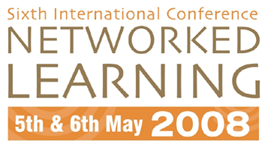

Blogging for beginners? Using blogs and eportfolios in Teacher Education
Julie Hughes1 and Emma Purnell2
University of Wolverhampton1, University of Wolverhampton, Centre for
Excellence In Learning and Teaching2, j.hughes2@wlv.ac.uk, e.purnell@wlv.ac.uk
Abstract
"What is the use of a book," thought Alice, "without pictures
or conversation?" (Carroll, (1865), p.1)
We do not 'store' experience as data, like a computer: we 'story' it.
(Winter, 1988, p.213)
In this period of expansion in mass HE in the UK the rise of 'non-traditional' students is exacerbating the crisis in defenders of anxious academic literacy. As Ivanic and Lea (2006, p.8) identify "questions about the status of knowledge and the increasing use of ICT is destabilising assumptions about the construction of knowledge and ownership in universities. Collaborative models of learning and teaching increasingly further challenge these long-held assumptions."
Blogs and electronic portfolios, as web communication tools, and community landscapes are increasingly well established. However, their use as a technological learning space within HE, and particularly with Teacher Education for the Post Compulsory Sector, is under theorised. This paper will contribute to this debate by considering and demonstrating how a creative, reflective learning community may be formed, fostered and exploited through modelling and ementoring.
The technology's challenge to the traditional monologic addressivity of the University (Lillis, 2001) offers spaces for reflexive thinking and representation in non-textual formats allows us to view and 'read' blogs and eportfolios as exciting, creative new spaces for student conversation and dialogue. Negotiating the tensions of this academic gated community as learning space encourages us to examine how the technology and its current capabilities creates the audience whilst acknowledging the role that the audience has in shaping the technology and its use in an educational context.
Storytelling as a theory of learning (McDrury and Alterio, 2002) and as 'everyday theorising' (Van Maanen, 1988) allows us to view an eportfolio as a reflective, transitional tool with the potential to be a transformative space for learning. The structure of an iterative eportfolio model; discursive and interpretative, supports learning and storytelling as process and as a way of knowing and a way to knowing. The use of digitised stories allows the learner to present themselves to their communities in non-textual/non-traditional formats such as metaphor, image and music.
Barrett (2005, p.19) suggests that reflection and 'the metaphor of portfolio as story' offer "a powerful environment in which students can collect and organize the artifacts that result from engaging in these challenging, real-life tasks, and write reflections through which students draw meaning." The use of a blogging tool with the eportfolio system PebblePAD allows us as teachers and learners to harness 'the power of the story' (Egan, 1986) to explore individual journeys and community convergences within a professional setting. Implicit in the stories are listeners and interactions. Thus learning is a social activity drawing upon experiences and prior knowledge with reflective dialogues as a medium for reconstructions of known and new knowledge(s).
Drawing upon student and staff narratives, this session will consider and demonstrate how new dialogic technologies such as an eportfolio and educational blogging might offer exciting learning and teaching spaces for collaborative learning, risk taking and storytelling exploiting the multiple literacies of students.
| About NLC |
2008 Conference Papers
| Conference Committee| Keynote
Speakers
| Papers from previous NL conferences |Research Seminars| Current Conference
| Sponsors | Contact
|
